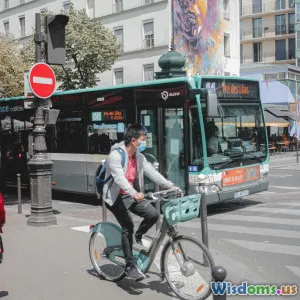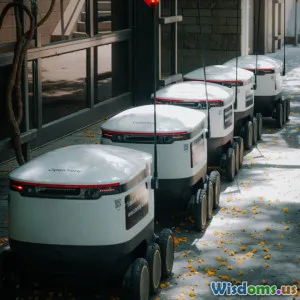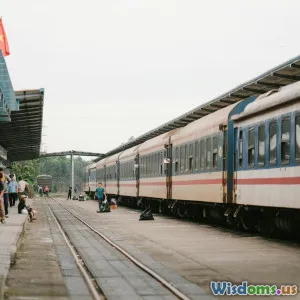
The Impact of Technology on Urban Living
7 min read Explore how technology reshapes urban living by redefining architecture, mobility, and sustainability in modern cities. (0 Reviews)
The Impact of Technology on Urban Living
Introduction
In the 21st century, cities are pulsating hubs of human activity and innovation, where technology enmeshes itself in nearly every facet of daily life. The fusion of digital technology with urban environments not only changes how people interact and move but also redefines the very fabric of architecture and urban design. From the gleaming smart skyscrapers reshaping city skylines to sensor-driven traffic management alleviating congestion, technology’s impact on urban living is sweeping and profound.
This article explores the multifaceted influence of technological advancements on urban living, focusing particularly on architecture and urban design. As cities worldwide grapple with rapid population growth, climate challenges, and a demand for greater sustainability, technology becomes an indispensable ally in crafting livable, resilient urban habitats.
Smart Architecture: Designing the Cities of Tomorrow
Embracing Smart Building Technologies
Modern architecture is being revolutionized by the infusion of smart technologies—integrated systems that optimize energy use, enhance comfort, and improve safety. For instance, the Edge building in Amsterdam is renowned for its highly intelligent infrastructure; it uses an array of IoT sensors to regulate lighting, heating, and workspace occupancy.
This responsive architecture not only reduces energy consumption but also personalizes environments to occupants’ preferences. A study by the World Green Building Council suggests that energy consumption can be reduced by up to 40% in smart buildings compared to conventional ones.
Biophilic and Adaptive Design
Technology also enables architects to incorporate biophilic designs—structures that harmonize natural elements with urban settings, improving mental wellbeing and environmental quality. Adaptive façades using kinetic technology can dynamically respond to sunlight or temperature changes, reducing glare and heat gain. Examples like the Al Bahar Towers in Abu Dhabi showcase innovative shading systems that imitate traditional ’mashrabiya,’ decreasing cooling loads by 50%.
Urban Mobility Transformation Through Technology
The Rise of Smart Transportation Systems
Efficient mobility is vital for vibrant urban living, and technology is key to alleviating traffic congestion and pollution. Cities like Singapore employ intelligent traffic systems using AI algorithms to optimize signal timings, improving traffic flow and reducing travel times.
Moreover, Motion, an autonomous shuttle project piloted in Helsinki, offers a glimpse of how driverless public transport can seamlessly blend with existing networks, promising safer and more accessible urban transit. According to McKinsey, adoption of autonomous and connected vehicles could reduce accidents by up to 90%, boosting urban safety.
Micromobility and Sustainable Commuting
The explosion of e-scooters, shared bicycles, and e-bikes illustrates technology driving a micromobility revolution. These green alternatives reduce carbon emissions—critical as transportation accounts for nearly 24% of global CO₂ emissions, per the IPCC.
Many cities now integrate app-based platforms that unify different modes of transit, encouraging multimodal travel. Copenhagen’s bike-share system, powered by real-time data analytics, leads urban planners to push for infrastructure that better supports cyclists, promoting healthier, eco-conscious cities.
Data-Driven Urban Planning and Infrastructure
Big Data and AI in Urban Design
Urban planners no longer rely solely on intuition and traditional surveys; big data analytics and AI enable evidence-based decision-making. By analyzing real-time data like pedestrian flows, environmental sensors, and social media trends, planners can optimize public spaces’ functionality and inclusivity.
Take Barcelona’s Smart City initiative, which uses data analytics to adjust street lighting, water usage, and public transportation dynamically, maximizing resource efficiency.
Enhancing Disaster Preparedness
With climate change increasing urban vulnerabilities, technology aids cities in resilience planning. IoT sensors monitor infrastructure health, while AI models predict flood zones and heatwaves. Tokyo, for example, uses seismic sensors connected to an early warning system to reduce earthquake damage, a technology life-saving in the 2011 disaster.
Sustainability and Green Urbanism Enabled by Technology
Renewable Energy Integration
Urban buildings powered by solar panels integrated through smart grids reflect a future where cities contribute to carbon neutrality. Silicon Valley’s Net Zero Energy building showcases how photovoltaics combined with energy-efficient systems can make commercial buildings self-sufficient.
Waste Management and Water Efficiency
Smart bins equipped with sensors alert municipalities when they need emptying, optimising waste collection routes and reducing environmental impact. Singapore employs smart water meters and leak detectors, preserving scarce freshwater resources.
Conclusion
Technology’s imprint on urban living is both vast and empowering. From reshaping architecture into responsive, sustainable structures to revolutionizing mobility and data-driven planning, the urban landscape is evolving at an unprecedented pace. These innovations not only address immediate challenges such as congestion and pollution but also enhance citizens’ quality of life by making cities more adaptive, inclusive, and resilient.
As cities continue to grow, embracing technology in architecture and urban design will be essential to crafting future urban realms that are smart yet humane. The path forward calls for cross-disciplinary collaboration—integrating technology, design, policy, and community needs—to ensure that urban living remains vibrant, just, and sustainable for generations to come.
References:
- World Green Building Council (2020). Smart Buildings: Creating Sustainable Spaces.
- McKinsey & Company (2018). Urban Mobility at the Tipping Point.
- Intergovernmental Panel on Climate Change (IPCC) Report 2021.
- Barcelona Smart City Initiatives - www.barcelona.cat
- Case Studies: The Edge, Amsterdam; Al Bahar Towers, Abu Dhabi; Net Zero Energy Silicon Valley Building.
- Tokyo Earthquake Early Warning System Data.
Rate the Post
User Reviews
Popular Posts





















